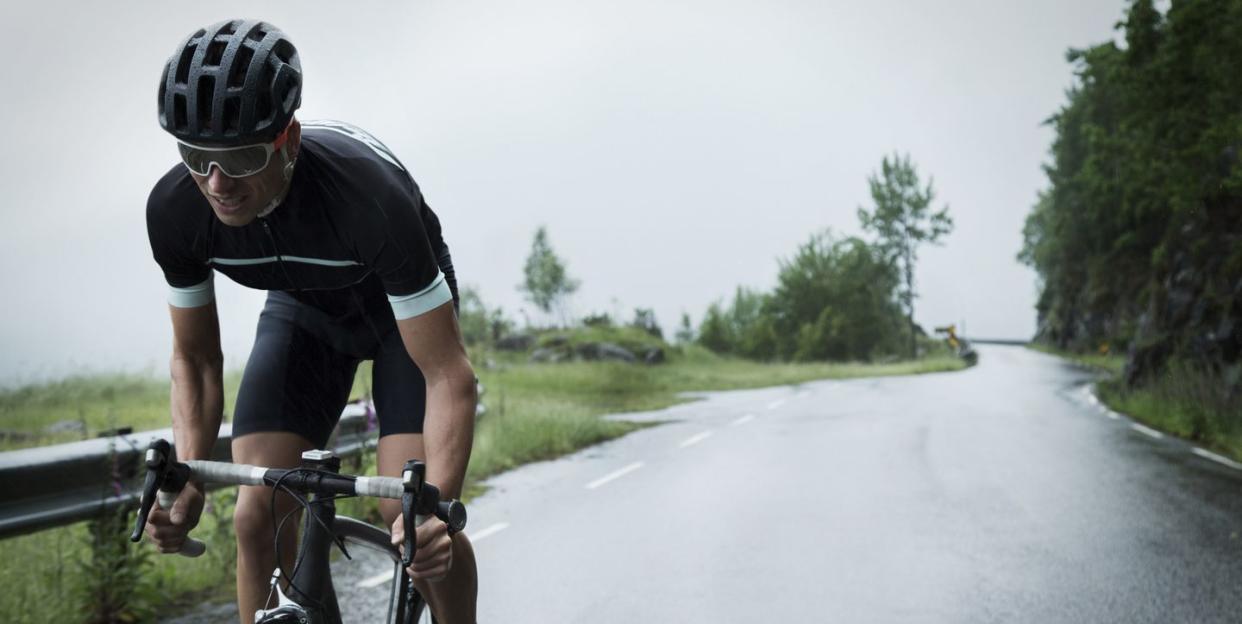More Than 1 in 4 Young Men and Women Are at Risk of Brittle Bones. Are You?

According to new research published in the Journal of the American Osteopathic Association, 28 percent of men and 26 percent of women age 35 to 50 meet the bone mineral density levels for osteopenia, a precursor to osteoporosis.
Cyclists may be at risk of osteoporosis even if they ride regularly because cycling is not considered a weight-bearing activity.
Adding weight-bearing activities like running, plyometrics, or weight lifting to cross-training can help make your bones stronger and reduce your osteoporosis risk.
Just the term “osteoporosis” tends to bring up mental images of older folks-usually women-struggling with the characteristic rounded back that comes with lower bone mineral density in the spine.
But what if osteoporosis could just as easily represent a 30-something guy on his bike in the middle of a century ride?
According to a recent study just published in the Journal of the American Osteopathic Association, that could be the case: Young and middle-aged guys may be more at risk for osteoporosis than you would think.
In the study, researchers analyzed the bone mineral density (BMD)of 173 adults aged between 35 and 50 years old. Participants were scanned at the femoral hip and lumbar spine to detect areas of low BMD, notable for being more porous-and therefore more prone to fracture.
They found that 28 percent of men and 26 percent of women in the study had osteopenia, a condition that occurs just before osteoporosis and is considered a precursor to that more serious issue.
Similar to how prediabetes is a big warning bell for diabetes, osteopenia should be a catalyst for employing more preventive strategies to avoid developing osteoporosis.
The takeaway from this study is that low BMD can occur at an earlier age than people think, and it affects both genders, according to study coauthor Allison Ford, Ph.D., professor of health, exercise science, and recreation management at University of Mississippi. In fact, she said, preventive measures should ideally be taken in childhood and early adolescence to combat low BMD in young adulthood and beyond.
How to make that happen? Stress out your bones. And sorry, that doesn’t mean riding more.
“A cyclist could potentially be at risk if they are not doing other exercises that are considered weight-bearing, such as resistance training, running, or jumping rope,” she said.
[Want to start running? The Big Book of Running for Beginners will take you through everything you need to know to get started, step by step.]
Cycling is a great activity for cardiovascular health, but it’s missing a key exercise component necessary for making bones stronger: resistance.
Here’s how it works: Bone is living tissue, just like muscle, so it responds to the temporary stress of certain kinds of exercise by getting stronger. Weight-bearing activities like jumping, climbing stairs, or squatting force you to work against gravity, and when your body resists that force, your bone cells increase in density to compensate. This causes new bone tissue to form. The result? Stronger bones.
A previous study on middle-aged men found that whole body and lumbar spine BMD increased after just six months of resistance training and jump training. In that study, the participants also received supplemental calcium and vitamin D, but researchers concluded it was mainly the jumping that boosted the BMD, not just the supplementation.
For both men and women, this recent study and previous research helps to emphasize why cross-training can be an important add when it comes to fitness. Do your heart a favor by getting on your bike, but also help your bones by jumping around once and awhile, too.
('You Might Also Like',)

